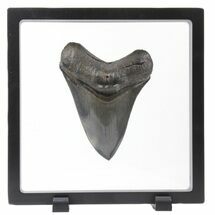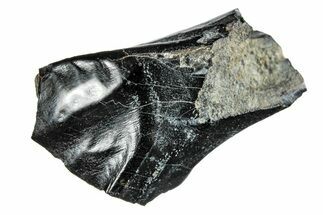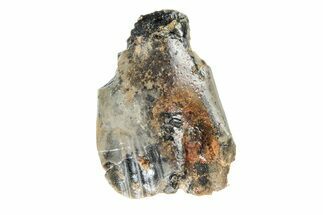1.45" Fossil Iguanodon Phalanx (Toe Bone) - Isle of Wight, England
This is a phalanx (toe bone) of an iguanodon known to have roamed Belgium, England, Spain, and Germany. It was collected from the Isle of Wight in England and is 1.45" wide. There is no repair or restoration to the bone. British dinosaur material is extremely hard to come by and this is a fantastic collector piece.
Comes with a floating frame display case.
About Isle Of Wight Fossil Deposits
The Isle of Wight, located off the southern coast of England, is one of the world’s most renowned fossil sites, particularly for dinosaur discoveries from the Early Cretaceous period, roughly 125 million years ago. The island’s rich fossil deposits are found mainly along its southern and eastern coastlines, where eroding cliffs and beaches reveal layers of sedimentary rock full of prehistoric treasures. The geology consists of formations like the Wessex Formation, known for preserving dinosaur bones, footprints, and plant fossils, and the Vectis Formation, which includes both terrestrial and freshwater deposits, suggesting a mix of environments from ancient floodplains to lakes and swamps.
Some of the most notable finds on the Isle of Wight include fossils of large herbivorous dinosaurs such as Iguanodon, as well as predators like Neovenator and Baryonyx. These discoveries have contributed significantly to our understanding of Early Cretaceous ecosystems and dinosaur diversity in Europe. Fossils of fish, turtles, crocodiles, and pterosaurs have also been uncovered, alongside fossilized plants, creating a picture of a lush, semi-tropical landscape that once covered the area. Today, the Isle of Wight attracts paleontologists and enthusiasts alike, with its beaches providing a rich hunting ground for fossils that continue to emerge from the cliffs, especially after storms or heavy rains.
The Isle of Wight, located off the southern coast of England, is one of the world’s most renowned fossil sites, particularly for dinosaur discoveries from the Early Cretaceous period, roughly 125 million years ago. The island’s rich fossil deposits are found mainly along its southern and eastern coastlines, where eroding cliffs and beaches reveal layers of sedimentary rock full of prehistoric treasures. The geology consists of formations like the Wessex Formation, known for preserving dinosaur bones, footprints, and plant fossils, and the Vectis Formation, which includes both terrestrial and freshwater deposits, suggesting a mix of environments from ancient floodplains to lakes and swamps.
Some of the most notable finds on the Isle of Wight include fossils of large herbivorous dinosaurs such as Iguanodon, as well as predators like Neovenator and Baryonyx. These discoveries have contributed significantly to our understanding of Early Cretaceous ecosystems and dinosaur diversity in Europe. Fossils of fish, turtles, crocodiles, and pterosaurs have also been uncovered, alongside fossilized plants, creating a picture of a lush, semi-tropical landscape that once covered the area. Today, the Isle of Wight attracts paleontologists and enthusiasts alike, with its beaches providing a rich hunting ground for fossils that continue to emerge from the cliffs, especially after storms or heavy rains.
$195
SPECIES
Indeterminate Iguanodon
LOCATION
Isle of Wight, England
FORMATION
Wessex Formation - Wealden Group
SIZE
1.45 x 1.1 x .6"
CATEGORY
SUB CATEGORY
ITEM
#316949
We guarantee the authenticity of all of our specimens.
 Reviews
Reviews












